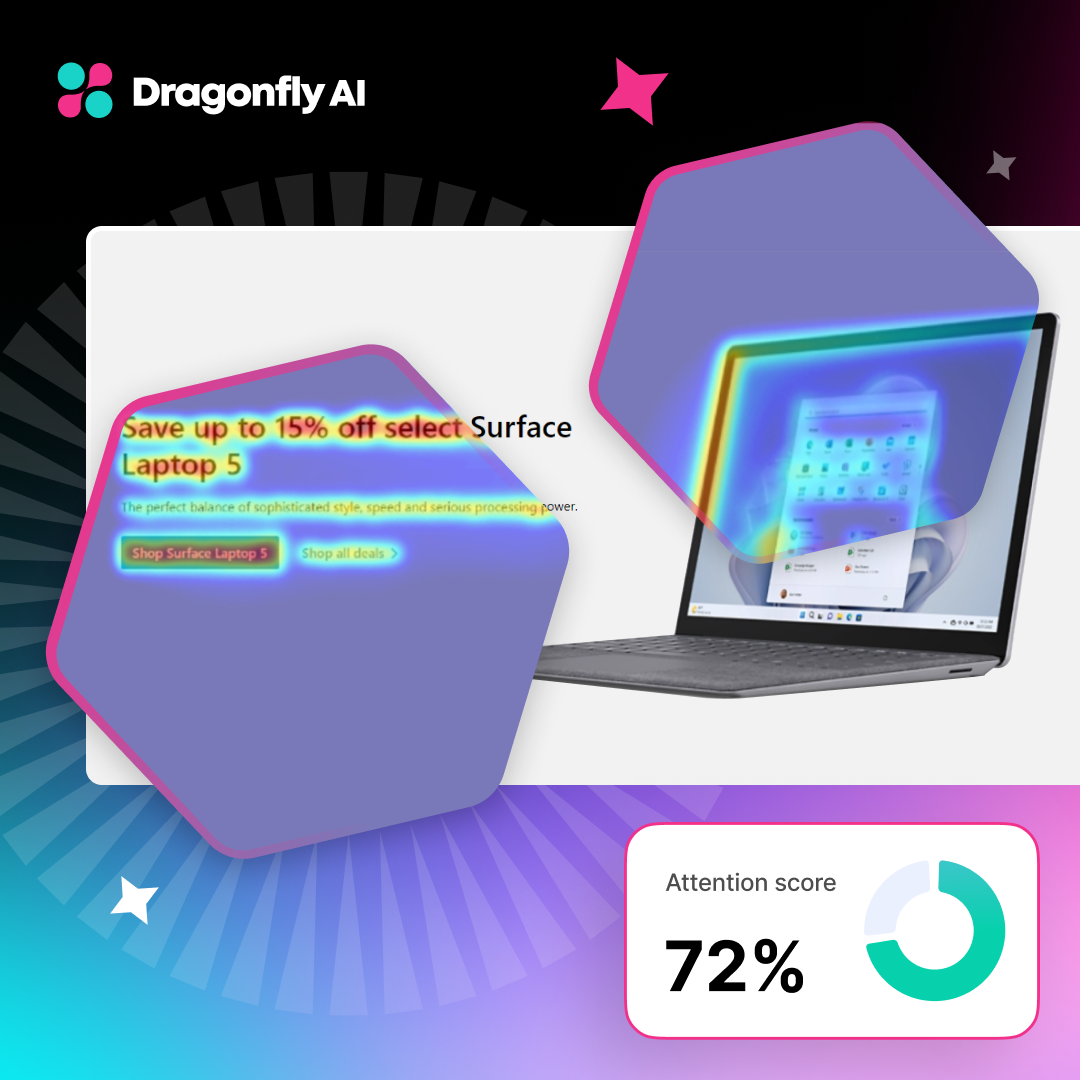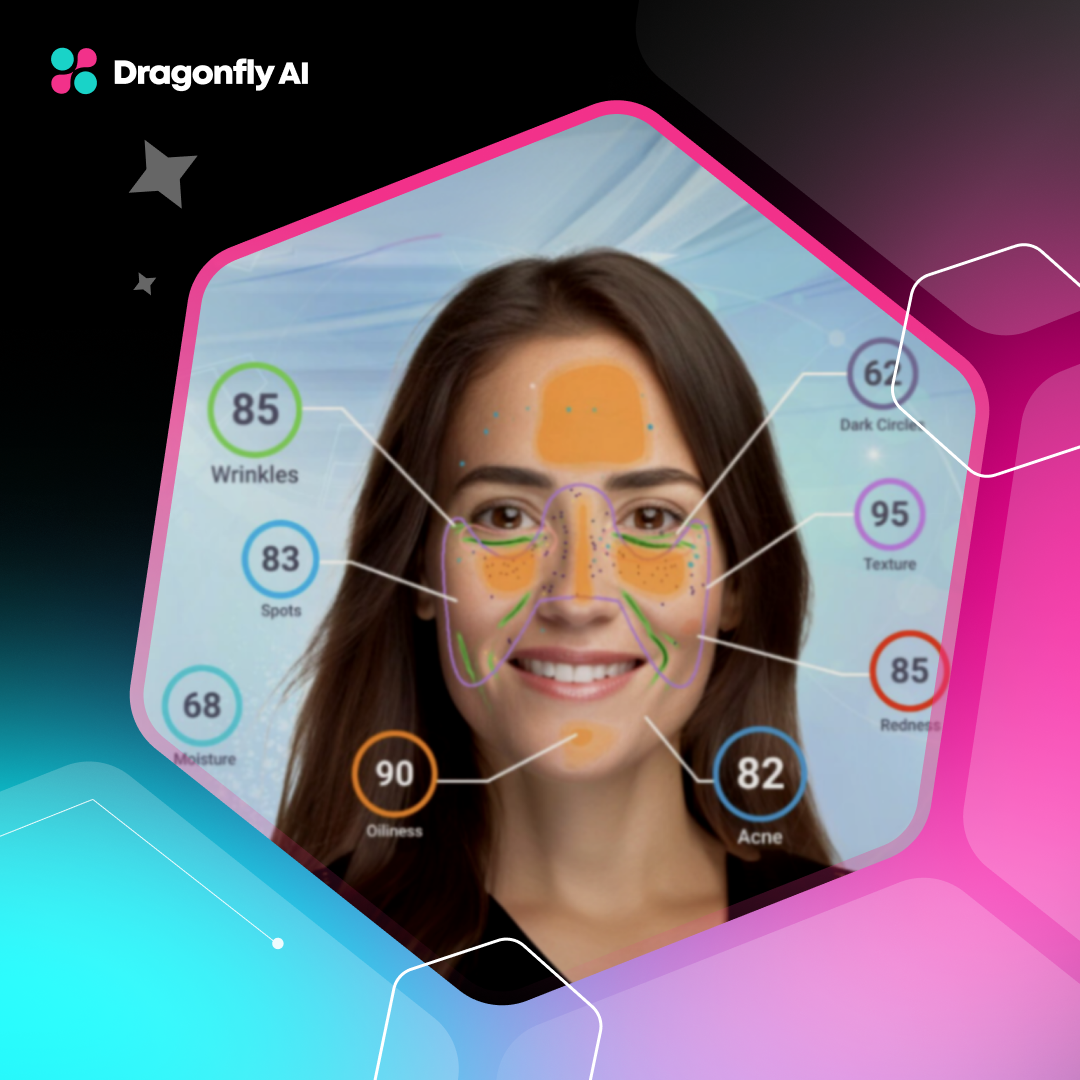In the crowded world of digital marketing, cutting through the noise has never been more difficult. With endless content vying for your audience's attention, standing out requires more than just good ideas — it demands smart, data-driven decisions.
That’s where creative intelligence steps in.
By combining AI insights with creative strategy, we can design campaigns that don’t just capture attention but also drive meaningful engagement and results.
Leveraging creative intelligence gives marketers the tools to create smarter, more impactful campaigns that truly resonate, whether it's fine-tuning visuals or optimizing messaging in real-time.
Creative OOH Ads: What is Creative Intelligence and Why It Matters in Campaigns
Creative intelligence combines data analytics, AI, and machine learning to fine-tune the creative process.
At Dragonfly AI, we use these technologies to help optimize your visual assets, so your marketing always hits the right spot with your audience – By analyzing how viewers interact with visuals, we provide insights to strengthen your campaigns’ effectiveness.
Creative intelligence is important because it helps you make decisions based on real-time data, allowing you to create an ad campaign that engages your audience and drives results.
To put it bluntly: The digital marketing landscape is more data-driven than it ever has been.
Both B2B and B2C brands are shifting from relying solely on gut instinct to using data to back their creative decisions.
Creative intelligence is what keeps modern campaigns competitive, making data and creativity work hand-in-hand to deliver the results that count.
Understanding Creative Intelligence
Creative intelligence is a vital component of successful out-of-home (OOH) advertising campaigns. It refers to the ability to think outside the box, come up with innovative ideas, and create engaging experiences that capture the attention of the target audience. In the context of OOH advertising, creative intelligence involves understanding the audience, the environment, and the message, and using this knowledge to craft a compelling narrative that resonates with people.
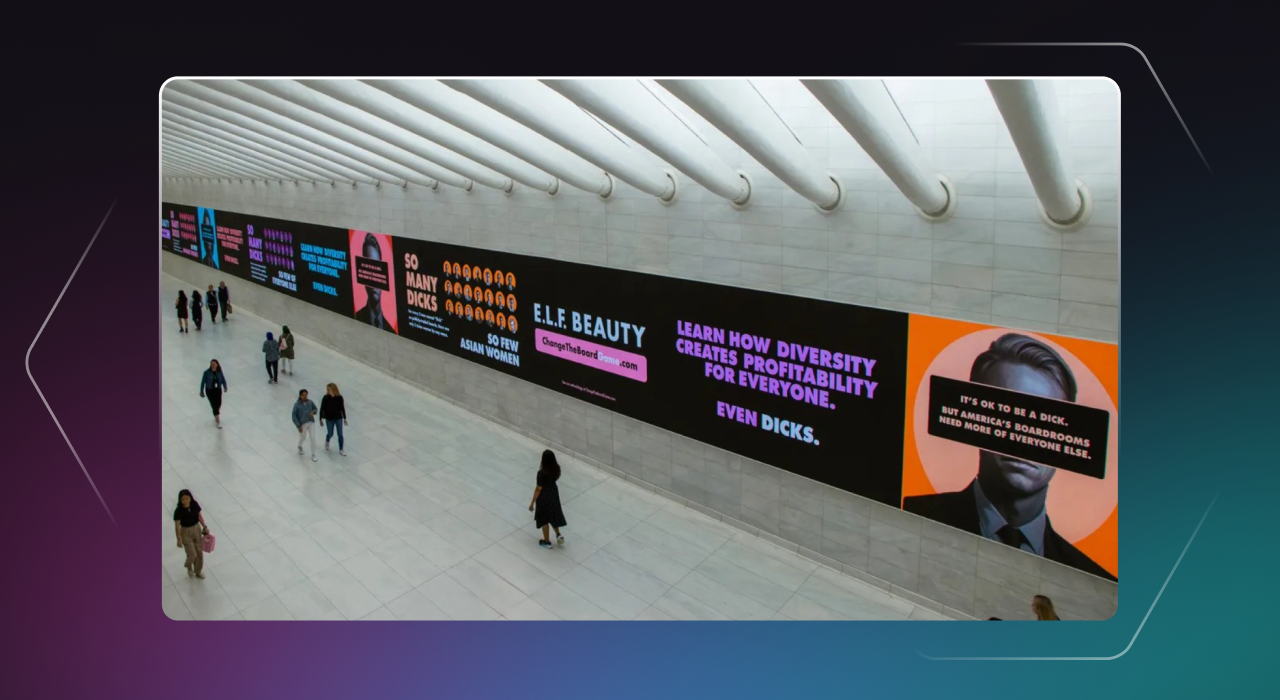
OOH advertising is unique because it interacts with people in their everyday environments, whether they’re commuting, shopping, or simply walking down the street. This means that creative intelligence must consider not just the visual appeal of an ad, but also how it fits into the surroundings and how it will be perceived by the target audience. By leveraging creative intelligence, advertisers can create OOH campaigns that are not only eye-catching but also deeply engaging and memorable.
Key Elements of Creative Intelligence
Imagination and Originality
Imagination and originality are essential elements of creative intelligence in OOH advertising. They enable advertisers to think beyond the conventional and come up with unique ideas that stand out from the crowd. By using imagination and originality, advertisers can create OOH ads that are memorable, engaging, and effective in grabbing the attention of the target audience.
For example, the KitKat billboard with a hole and a hammock is a great example of imagination and originality in OOH advertising. This creative approach not only captured attention but also conveyed the brand’s message of taking a break in a fun and memorable way. Such innovative ideas can transform a simple billboard into an interactive experience that leaves a lasting impression.
Emotional Intelligence and Empathy
Emotional intelligence and empathy are critical components of creative intelligence in OOH advertising. They enable advertisers to understand the emotions, needs, and desires of the target audience and create ads that resonate with them on an emotional level. By using emotional intelligence and empathy, advertisers can create OOH ads that are relatable, engaging, and effective in building a connection with the audience.
For instance, the Müller OOH campaign that featured a close-up of a highly-aesthetic, delectable yoghurt is a great example of emotional intelligence and empathy in OOH advertising. The ad’s visual appeal and focus on the product’s sensory experience tapped into the audience’s desires and emotions, making it highly effective in engaging viewers and sparking a craving for the product.
Analytical and Critical Thinking
Analytical and critical thinking are essential elements of creative intelligence in OOH advertising. They enable advertisers to analyze data, understand the audience, and make informed decisions about the creative direction of the campaign. By using analytical and critical thinking, advertisers can create OOH ads that are effective in achieving the desired outcome, whether it’s increasing brand awareness, driving sales, or sparking conversations.
For example, the Nike Air Max OOH campaign that used a 3D digital billboard in Tokyo is a great example of analytical and critical thinking in OOH advertising. By analyzing data on foot traffic and audience demographics, Nike was able to strategically place a visually stunning 3D billboard that not only grabbed attention but also engaged audiences in a highly interactive and memorable way.
By incorporating these key elements of creative intelligence, advertisers can create OOH campaigns that are effective, engaging, and memorable. Whether it’s using imagination and originality, emotional intelligence and empathy, or analytical and critical thinking, creative intelligence is essential for creating OOH ads that grab attention, spark conversations, and drive results.
Tracking Campaign Success with Marketing Measurement Tools
To understand how well your advertising campaign is doing, you need real-time data.
Marketing campaign trackers are essential tools for monitoring performance from start to finish. They give you visibility into how your ads are performing, showing you where your efforts are paying off and where adjustments might be needed.
These trackers provide a comprehensive overview, including which channels are bringing in traffic and how users are interacting with your content.
Growth Marketing Metrics to Monitor
Tracking the right metrics is key to understanding your campaign’s success. Billboard ads can significantly impact conversion rates by capturing consumer attention through dynamic and engaging campaigns. Some of the most important growth marketing metrics to monitor include:
- Conversion rates: This tells you how many users took a desired action, like making a purchase or signing up for a newsletter.
- Engagement: These metrics, such as clicks, likes, shares, or comments, show how well your content is resonating with your audience.
- ROI (Return on Investment): Ultimately, this is the figure that matters most. ROI measures the financial return you get from the amount you’ve invested in your campaign.
By keeping a close eye on these metrics, you can make informed decisions about where to invest your time and resources.
How to Measure the Success of an Advertising Campaign
Measuring the success of your marketing campaign starts with setting clear, measurable objectives.
Follow these simple steps:
- Define your goals: What do you want to achieve? Whether it’s increasing brand awareness or driving conversions, your goals will shape your metrics.
- Select the right tools: Choose marketing measurement tools that align with your goals. Tools such as Google Analytics can track performance, providing you with extremely detailed insights.
- Monitor and analyze: Regularly review your data, looking at key growth metrics like engagement and ROI. By analyzing these, you can see if you’re on track to meet your objectives.
- Adjust as needed: If you notice areas where performance is lagging, make real-time adjustments to optimize your campaign. Whether it’s tweaking your messaging or reallocating your budget, flexibility is key to success.
By using the right tools and keeping your goals in focus, you can evaluate and continuously improve your campaign's effectiveness.
Leveraging B2B Marketing Automation for Campaign Efficiency
In B2B marketing, automation tools can be a game-changer for making your campaigns run smoothly. These tools handle repetitive tasks, like sending emails, managing follow-ups, and tracking customer interactions, so you can focus on the bigger picture. Incorporating creative advertising channels, such as 3D billboards and digital content, can further enhance your campaign's efficiency and engagement.
Popular platforms like HubSpot are great for automating workflows, whether you’re nurturing leads or keeping track of customer relationships.
With these tools, you can set up systems to send the right message at the right time, helping you engage with your audience without heavy lifting.
Improving Campaign Success with Automation
Automation doesn’t just save time—it helps your campaigns perform better. Digital screens play a crucial role in boosting engagement and conversions by allowing for dynamic and targeted advertising in high-traffic locations.
By automating things like personalized content and sending messages at the right time, you can boost your engagement and conversions.
Tools like Salesforce can take data from your leads and figure out the best times to send messages, making everything feel more personalized.
Integration with Creative Intelligence on Digital Screens
When you bring automation and creative intelligence together, your campaigns are much more effective. Digital signage can be used to create engaging and personalized content, utilizing technology to capture attention and boost brand awareness.
Creative intelligence uses AI and data to help you figure out what works best in your campaign, from the design to the messaging.
When these insights are combined with automation, your campaigns can adapt in real time to how your audience responds. This means your campaigns will be more targeted, more personalized, and overall, more successful at reaching your goals.
Campaign Analysis: Creative Intelligence in Data-Driven Marketing
Today, creative intelligence plays an important part in campaign analysis.
By using tools like Dragonfly AI’s creative optimization solutions, you can analyze how different visual elements are performing and identify areas for improvement.
This data-driven approach allows for continuous campaign optimization, helping you make informed decisions on messaging, design, and content.
With our visual testing tools, you can adjust and refine your creative assets based on current feedback.
Whether it's through A/B testing, multivariate testing, or lift testing, Dragonfly AI lets you see how small changes can lead to big improvements in performance.
Best Practices for Using Creative Intelligence in Digital Marketing
If you want to maximize your digital marketing efforts, taking full advantage of creative intelligence can make all the difference. Creative intelligence helps engage audiences by leveraging timely and relevant messaging, ensuring your brand stands out and resonates with viewers.
Here are some best practices to make the most of this powerful approach.
Set Clear Objectives and KPIs
To kick off your digital marketing campaigns successfully, start with clear goals and Key Performance Indicators (KPIs). These are the targets you'll measure your success against.
Make sure your objectives align with growth marketing metrics like conversion rates or engagement levels – this way, you’ll have a solid framework to evaluate how well your campaigns are doing.
Use Data-Driven Insights to Guide Creative Decisions for Target Audience
Let data guide your creative choices. Out of home advertising plays a crucial role in data-driven creative decisions by showcasing innovative and engaging ways brands capture consumer attention. Using creative intelligence means looking at the numbers to see what works best for your audience.
For example, analyze past campaigns to figure out which designs and messages got the best responses. This insight helps you create content that truly resonates with your target audience and makes your campaigns more effective.
Iterate and Optimize
Don’t just set your campaigns and forget about them. Outdoor ads, like the creative holiday campaign by WeRoad, play a crucial role in ongoing campaign optimization by connecting with potential customers through relatable and humorous content. Regularly check how they’re performing and be ready to make changes based on what the data shows.
By tweaking your campaigns along the way—whether it’s adjusting your messaging or changing visuals—you can improve results over time.
This ongoing optimization helps your campaigns stay relevant and engaging, leading to better outcomes overall.
Real-World Examples of Creative Intelligence Driving Outdoor Advertising Success
Netflix, Spotify, and Coca-Cola have harnessed data to connect with their audiences in meaningful ways, transforming the way they engage and retain customers. Outdoor advertising has played a significant role in their success, with creative and effective campaigns that capture attention in public spaces.
Here’s how they’ve done it.
H3: Netflix: Using Data to Engage Viewers
Netflix uses creative intelligence to drive engagement by analyzing what viewers watch.
By looking at data on user preferences and viewing habits, Netflix can recommend shows and movies that its users are likely to enjoy.
For instance, if you watch a lot of sci-fi, Netflix will suggest similar titles that match your interests. This personalized approach keeps users glued to the screen and encourages them to explore more content.
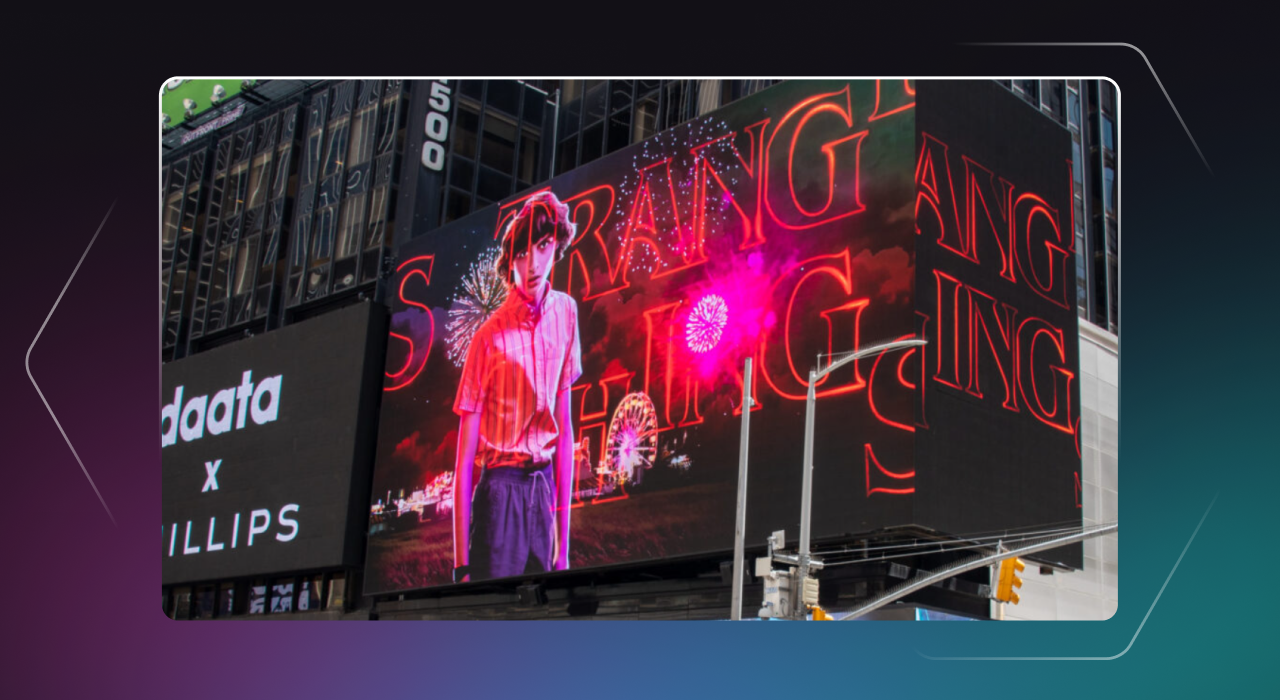
Netflix also heavily relies on data to decide what new shows and movies to create.
By studying trends and what audiences are drawn to, they can develop original content that’s likely to be a hit. Popular series like “Stranger Things” were born from careful analysis of viewer preferences.
This means Netflix not only keeps its existing subscribers happy but also attracts new ones with fresh and exciting content.
H3: Spotify: Tailoring Music Just for You
Spotify prevails at using creative intelligence to make music listening feel personal. Spotify's personalized playlists have sparked conversations among users, engaging them with unique and tailored music experiences.
The platform tracks what you listen to and creates custom playlists like “Discover Weekly,” which introduces you to new songs based on your taste. This personalized experience helps listeners feel connected to the music and keeps them coming back for more.
Spotify also improves its recommendations over time. The more you listen, the better Spotify gets at suggesting tracks you’ll love.
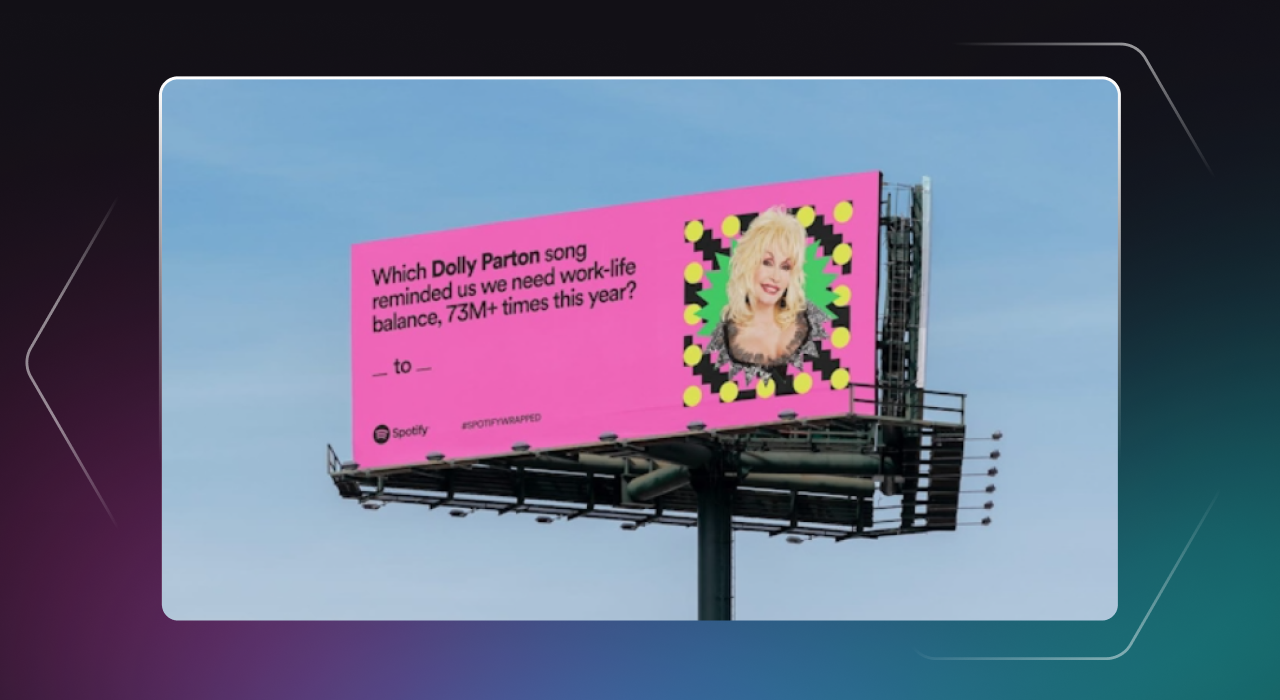
This ongoing personalization skyrockets user satisfaction and keeps subscribers engaged, which is key to Spotify’s success in the highly competitive music streaming industry.
Winning Campaigns Use Creative Intelligence
Creative intelligence is the key to amplifying the success of your marketing campaigns. Creative OOH plays a crucial role in this by incorporating innovative and engaging out-of-home advertising elements.
By using data insights, marketing measurement tools, and automation, you can create campaigns that are not only eye-catching but also effective.
This combination helps you understand what works best for your audience and allows you to make real-time adjustments.
The result?
More meaningful engagement and improved campaign outcomes.
Why wait? Now’s the time to tap into creative intelligence and automation for your next digital campaign!
